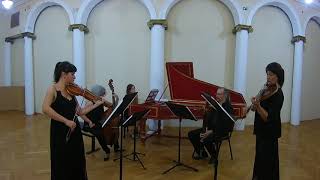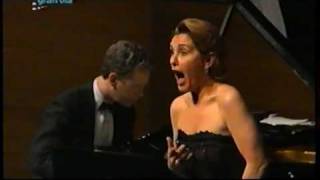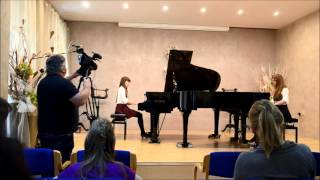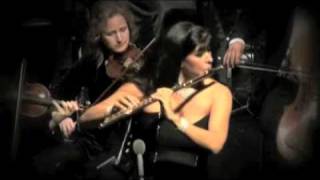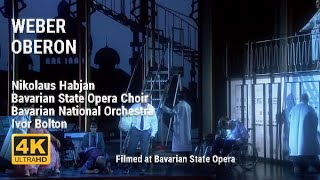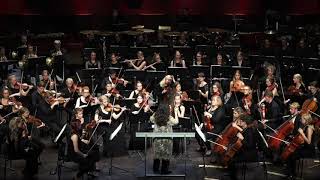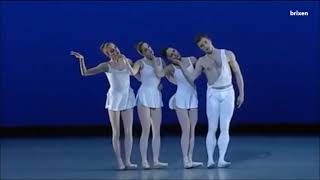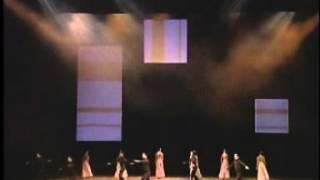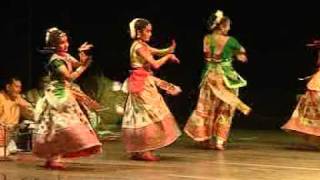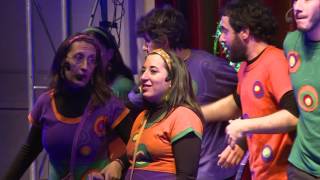Recommended music videos for initiation to classical music
Isabella Leonarda (1620-1724). Italian composer, considered the first composer of sonatas for 1, 2, 3, and 4 instruments and the first woman to have her works published, with nearly 200 written works covering all genres of religious and instrumental music of the time: sonatas, concertos, motets, psalteries, responsories, magnificats, litanies, vespers, and masses. Born into a noble family, at the age of 16 she entered the College of Saint Ursula in Novara as a novice, consecrated a nun in 1639, mother superior in 1686, mother vicar in 1693, and counselor from 1700. The French composer Sébastien de Brossard when he had access to some of her pieces wrote admiringly in his Catalogue des livres de musique theorique et pratique (Paris, 1724): "All the works of this illustrious and incomparable Isabella Leonarda are so beautiful, so graceful, so brilliant, and at the same time so understood and so wise ... that it pains me not to have them all."
Today we offer the Tenth Sonata in F major for two violins, viola da gamba and basso continuo by Isabella Leonarda in performance by the Syrah Ensemble .
Amadeo Vives (1871-1932), a composer born in Barcelona, is the author of numerous songs and more than a hundred stage works, among which are Bohemios, Maruxa and, above all, Doña Francisquita, considered among the masterpieces of the genre. He began taking music lessons from his brother at the age of five; later, with José Ribera, he studied piano, harmony and composition; he collaborated with Lluis Millet in the founding of the Orfeó Catalá , which would begin its journey with Catalan songs harmonized by Amadeo Vives . By the age of fourteen, he had composed several sonatas, and at 24, he premiered his first opera in Barcelona . He later moved to Madrid , where his stage premieres received successful responses and gained recognition.
Doña Francisquita is a zarzuela, known as a "lyric comedy", in three acts with a libretto by Federico Romero Sarachaga and Guillermo Fernández-Shaw Iturralde , based on the comedy La desconcertada (The Discreet Enamorada) by Félix Lope de Vega , with music by maestro Amadeo Vives ; it premiered at the Teatro Apolo in Madrid on 17 October 1923. It is considered one of the greatest zarzuela works, setting a model for the genre. The libretto portrays romantic Madrid in a poetic and faithful manner, creating pictures of great colour and liveliness, without falling into mere historical recreation, making this a work full of freshness. Due to its characteristics, it can also be defined as a high-quality comic opera.
María Bayo (1961 Fitero , Navarra/Nafarroa) is a soprano who has developed a distinguished international career as a performer of opera, zarzuela and classical song. Although she was born in a hospital in Tudela , she considers the town of Fitero , where her family lives and with which she maintains a close ties, her hometown. She has been awarded first prize in the Belvedere competition in Vienna , the National Music Prize , the Prince of Viana Culture Award ; she has been invested as an elected member of Jakiunde , awarded the Humanities Prize of Eusko Ikaskuntza-Caja Laboral , the Traetta Prize of the Traetta Society, the Cadenas Prize of Navarra ... In 2020 she received the Gold Medal for Merit in Fine Arts .
Today he offers us the romance of Doña Francisquita , Song of the Nightingale accompanied on piano by Brian Zeger .
Antonín Dvořák (1841-1904) was born in Nelahozeves , then Bohemia , now the Czech Republic , and is considered one of the great masters of the second half of the 19th century and a leading representative of Czech nationalism. Between 1892 and 1895, Dvořák was director of the National Conservatory in New York ; he showed a great interest in Native American music since his arrival in the USA . In April 1895 he left the United States and returned permanently to his homeland where he began his work as a professor at the Conservatory. Throughout his life he wrote music for piano, violin and piano, trios, quartets, quintets, a sextet, two series of Slavic dances, serenades, suites, overtures, three rhapsodies, five symphonic poems, nine symphonies, several concertos, 100 songs and vocal duets and several operas. His New World Symphony is a well-known work and its themes have been widely used in popular music.
The Slavonic Dances are a set of 16 dances written for orchestra, although originally for piano four hands, and published in two groups. He wrote them at the request of his publisher and was inspired by Brahms 's Hungarian Dances , although with notable differences; while Brahms uses Hungarian folk melodies, Dvorak uses only the rhythms of Slavic folk music.
Today we can watch Slavic Dance No. 1 under the direction of Kristian Jarvi (1972), an Estonian director, son of Neeme Järvi and brother of Paavo Järv i .
Francis Poulenc (1899 – 1963) was a French composer and a member of the French group Les Six , composed of Milhaud, Auric, Durey, Honegger, Tailleferre (the only woman in the group), and Poulenc himself. He embraced the techniques of the Dada movement (an anti-artistic, anti-literary, and anti-poetic movement that questions the existence of art, literature, and poetry). Critic Claude Rostand describes Poulenc as "half heretic, half monk", a label that remained attached to his name for the rest of his career, while Poulenc says, "My work is the juxtaposition of the profane with the sacred." Some critics consider him the first openly gay composer in history. He composed music in all the major genres, including chamber music, oratorio, opera, ballet, and orchestral music.
The French waltz or valse musette is an 18th-century pseudo-pastoral dance piece. It refers to a tune in 2/4, 3/4, or 6/8 time, with a moderate tempo and a soft, simple character, corresponding to the instrument from which it takes its name: musette or bagpipe . These pieces were danced in French ballets of the early 18th century ; but it also refers to a musical style predominant in Paris , where the accordion was the main instrument. Over time, the musette style became a way of life, and even today it is common to associate this type of "urban music" with modern Paris .
Today we offer this musette waltz written by Poulenc for two pianos performed by Andrea Štosková and Lada Bubiková .
Recommended classical music videos
Christoph Willibald Gluck (1714-1787) was a German composer, widely regarded as one of the most important opera composers of the Classical period (1750-1820). He completely reformed opera, eliminating da capo arias and long dry recitatives with harpsichord, replacing them with recitatives accompanied by an orchestra; he dispensed with castrati and the exhibitionism of the singers, giving greater importance to the plot, while elevating the overture, the ballet and the chorus as integral parts of his operas. Among his most highly valued works are Orfeo ed Euridice (1762) and Alceste (1767) premiered in Vienna , and Iphigénie in Aulis (1774), Armide (1777) and Iphigénie in Tauride (1779) premiered in Paris .
Orpheus and Eurydice is his first opera; written in three acts, it reflects his innovative concerns, discarding all types of trivial manifestations and highlighting the force of the argument; to this end, he does not hesitate to use dances and choruses, in addition to the aforementioned. The plot is based on the Greek myth of Orpheus , who was able to tame beasts with his music and who, after the death of his beloved Eurydice , was allowed by Cupid to descend to the underworld to rescue her on the condition that on the way back he did not turn his head to look at her. Faced with Eurydice 's insistent pleas, Orpheus turns his gaze towards her, thus definitively losing his beloved.
Today we offer the prelude to the second act, Dance of the Blessed Spirits , with Viviana Guzmán as solo flute.
Fanny Mendelssohn (Berlin 1805-1847) was a composer and pianist of the early Romantic period (1810-1910). Her compositions include a piano trio, a piano quartet, an orchestral overture, four cantatas, over 125 piano pieces, and over 250 lieder, most of which were published posthumously. Although she was praised for her piano playing, she rarely gave public concerts. Fanny grew up in Berlin where, with her younger brother Felix Mendelssohn , she received a thorough musical education from teachers such as Ludwig Berger and Carl Friedrich Zelter . Due to the social status of women in her time, several of her works were published under her brother's name in his opus 8 and 9 collections.
Fanny Mendelssohn 's Piano Trio in D minor , Op. 11 , was conceived between 1846 and 1847 as a birthday present for her sister and published posthumously in 1850, three years after the composer's death. The trio consists of four movements: I (5:15 PM) ALLEGRO MUY VIVACE II (15:36 PM) ANDANTE EXPRESIVO III (21:17 PM) SONG: ALLEGRETTO IV (23:09 PM) ALEGRE MODERADO. In 1847, an anonymous critic for the Neue Berliner Musikzeitung found in the trio “...broad foundations which build through stormy waves into a marvelous edifice. In this respect, the first movement is a masterpiece, and the trio is highly original.”
Today it is offered to us by the Trio formed by Chloe Jiyeong Mun on piano, DongSuk Kang on violin and SeungMin Kang on cello.
Carl Maria von Weber (1786-1826) was a German composer. From a very young age he learned to sing and play the piano, and at the age of 12 he received free lessons in Salzburg from Michael Haydn , brother of Joseph Haydn . In 1812 his father died and the following year he was appointed director of the Prague Orchestra and later of the Dresden Orchestra, while he was working on his most famous opera, Der Freischütz (The Poacher); He also composed two other operas, Euryanthe and Oberon ; all three operas are considered by many critics to be masterpieces of the stage genre. In addition to other operas, he composed numerous songs, piano works, chamber works, two symphonies, several overtures, concerts and concertante works for different instruments, three masses and eight cantatas.
Oberon or The Elf King's Oath is a Romantic opera in three acts by Carl Maria von Weber to an English libretto by James Robinson Planché , inspired by a poem by Christoph Martin Wieland . It premiered at Covent Garden, London, on 12 April 1826. Commissioned by Charles Kemble , Weber embarked on this project against medical advice for financial reasons. He traveled to London to complete the music before the opera's successful premiere, but destroyed his health in the process, and died in London on 5 June of the same year. Owing to the complicated requirements of its libretto and staging, it has not established itself in the international repertoire like the composer's other opera, The Poacher , although the Overture does form part of the concert repertoire. The style of the work is romantic and the music recreates a fantastic atmosphere of an oriental tale, narrating the story of the medieval knight Huon rescuing his fiancée Rezia, kidnapped by the Caliph of Baghdad .
Today it is offered to us by the soloists Julian Prégardien (Oberon), Alyona Abramowa (Titania/Puck), Annette Dasch (Rezia), Brenden Gunnell (Bordeaux Huon) Rachael Wilson (Fatime), Johannes Kammler (Scherasmin), Anna El-Kashem (Nymph), Manuela Linshalm , Daniel Frantisek Kamen , Sebastian Mock , accompanied by the Bavarian State Opera Chorus and the Bavarian National Orchestra conducted by the English maestro Ivor Bolton .
Gustav Mahler (1860-1911) was an Austrian composer and conductor born in Kaliště , now the Czech Republic , and considered one of the most eminent composers of post-Romanticism. His creative work focused on the symphony, the lied (lyric song), and the conjunction of both concepts. Added to this was the diversity of elements he worked with (popular melodies, military melodies, fanfares of various kinds, etc.), the obvious dissonances to which the public was unaccustomed, and the long duration of his symphonies. If we add to this the fact that he faced a certain anti-Semitic press due to his Jewish origins, it is not surprising that his compositions did not enjoy the success they deserved during his lifetime.
Gustav Mahler 's Symphony No. 1 ("Titan") in D major was completed in 1888, one year before its Budapest premiere in 1889. Originally conceived as a long symphonic poem, Mahler used music from his abandoned opera project Rübezahl and incidental music for Viktor Nessler 's play The Trumpet of Säkkingen . Every performance since its Budapest premiere has met with almost total rejection from critics and audiences alike. Mahler subsequently revised the symphony several times, and today, due to its rich melody, the symphony is one of Mahler 's most beloved works, and is frequently performed in concert halls. After its multiple revisions, the Symphony was definitively structured in four movements: I (0´49´´) LANGSAM, SCHLEPPEND .-. II (18´27´´) SCHERZO: KRÄFTIG BEWEGT, DOCH NICHT ZU SCHNELL .-. III (27´33´´) TRAUERMARSCH: FEIERLICH UND GEMESSEN, OHNE ZU SCHLEPPEN .-. IV (39´41´´) STÜRMISCH BEWEGT.
Today it is offered to us by the KMH Symphony Orchestra conducted by Austrian maestro Nazanin Aghakhani .
Recommended music videos for all tastes
Big Band. The English expression Big Band refers to a large group of jazz musicians who play together. As a general rule, although there is no single format for a Big Band , it is usually composed of three sections: woodwinds (reeds), brass (horn section), and rhythm. The woodwind section is usually made up of four or more saxophones (usually an alto, two tenors, and a baritone), which usually alternate with other instruments such as clarinet and flute. The brass section includes at least three or four trumpets and two or more trombones (sometimes including a bass trombone). Finally, the accompanying rhythm section is made up of some combination of piano, guitar, bass, and drums. Therefore, a total of between 12 and 17 members.
Gerry Mulligan (1927–1996) was an American jazz musician, baritone saxophonist, arranger, and one of the legendary figures of jazz saxophone music, as well as one of the foremost exponents of cool music . Mulligan began as a pianist before learning to play the clarinet and various types of saxophones. However, his initial reputation was as an arranger. His first notable performance as a baritone saxophonist was with Miles Davis's group. In the 1990s, he toured with his own quartet and led the " Rebirth of the Cool Band ", playing and recording several classics from Miles Davis 's nonet.
Today we feature a concert by Gerry Mulligan and his Big Band at the North Sea Jazz Festival in the Netherlands.
Jane Birkin (London 1946) is an Anglo-French actress and singer who has lived in France since the late 1960s. After her film career in the United Kingdom , notably in the film A Midsummer Morning's Wish , she began a career in France , where she met Serge Gainsbourg , who would later become her mentor, composer and partner. Her faint voice became her trademark and was used cleverly. One of their first collaborations was the song Je t'aime... moi non plus , which became an international hit. In the late 1980s, she performed in a series of concerts in Paris , interpreting the repertoire that Gainsbourg had written for her. In 2017, she released her thirteenth studio album, "Birkin-Gainsbourg le symphonique" .
Today we offer a florilegium of popular songs accompanied by the Orchestre Lamoureux conducted by maestro Didier Benetti .
Eñaut Elorrieta (Gernika, 1975) is the founder and singer of the well-established Basque group Ken Zazpi . Works such as Atzo da b ihar (2001), Argiak (2007) or Phoenicoperus (2015) sign part of the biography of this group. But since 2013, Eñaut Elorrieta 's artistic career has opened up a new path with the release of his first solo album, Deserriko kantak, under the Elkar record label . Since then, he has combined both roles, as a solo artist and as a member of Ken Zazpi , undertaking an important concert tour of different venues and theatres.
Harian zuzenean . With this video, we present a collection of eight tracks recorded in different locations throughout Eñaut Elorrieta's tour accompanied by the Kaabestri String Ensemble.
Mercedes Sosa (1935-2009) was an Argentine folk singer, considered the greatest exponent of Argentine folklore. She was known as The Voice of Latin America . Founder of the New Songbook Movement and one of the exponents of the New Latin American Song , she ventured into other genres such as tango, rock and pop . She defined herself as a "singer" rather than a "singer", a fundamental distinction in the new Latin American song of which she was one of the initiators: "A singer is someone who can, and a singer is someone who must" ( Facundo Cabral ). She was honored in 2005 by the Argentine Senate with the Sarmiento Prize in recognition of her artistic career, her social commitment and her constant fight for human rights.
Recommended peculiar videos
Igor Stravinsky (1882-1971) was a Russian pianist, conductor and composer; for many critics, the most important of the 20th century . In his long life he delved into different musical styles and genres from post-romanticism to serialism and jazz . He studied, among others, with Rimsky Korsakov and worked for different genres and musical groups; but after meeting Sergei Diaghilev , founder of the Ballets Russes , he collaborated closely with him and it was with his ballets that he achieved greatest fame and influence. Among all his ballets we must highlight " The Rite of Spring ", for many, a masterpiece of the 20th century ; despite the fact that its premiere was an absolute scandal full of protests and even punches among the audience. Time magazine considered him one of the most influential personalities of the 20th century .
Apollo (originally Apollon musagète and known as Apollo musagetes, Apollo Musageta, and Apollo, Leader of the Muses) is a neoclassical ballet in two tableaux composed between 1927 and 1928 by Igor Stravinsky . It was choreographed in 1928 by the then twenty-four-year-old George Balanchine , with the composer contributing the libretto. The scenery and costumes were designed by André Bauchant , although new costumes were made by Coco Chanel in 1929. The sets were executed by Alexander Shervashidze , and the costumes for the premiere were done under the direction of Mme. A. Youkine . The American patron of the arts Elizabeth Sprague Coolidge had commissioned the ballet in 1927 for a festival of contemporary music to be held the following year at the Library of Congress in Washington, D.C.
Stravinsky had been thinking of writing a ballet about an episode from Greek mythology for some time and decided to make Apollo , leader of the Muses, its central figure, reducing the number of Muses from nine to three. They were Terpsichore , personifying dance, Calliope , combining poetry and rhythm, and Polyhymnia , representing theatre. The theme: Apollo musageta ('master of the Muses') instructs the Muses in their arts by taking them to Parnassus . Stravinsky explained the original title Apollon Musagète as meaning " Apollo, leader of the Muses ". The ballet draws on the great tradition of 17th and 18th- century French music, particularly that of Jean-Baptiste Lully , a source to which Stravinsky returned when composing Agon in 1957.
The first version of the ballet Apollo , specially commissioned for the Washington Festival, premiered on April 27, 1928, with choreography by Adolph Bolm , who also danced the role of Apollo , choreography now virtually forgotten. Stravinsky had reserved the European rights to the score for Sergei Diaghilev, producer of the Ballets Russes company. Choreographed by the 24-year-old Balanchine , the revamped work opened at the Théâtre Sarah Bernhardt in Paris on June 12, 1928; Stravinsky conducted the performance. Balanchine later said that when he heard Stravinsky 's music, all he could see was stark white. The clarity, calm, even serenity of the music makes it seem infinitely remote from the colorful excitement of Stravinsky 's earlier ballets. The lack of any conflict on stage, of any narrative, psychological, or expressive intent, was further combined with the monochromatic costumes for the dancers and the absence of elaborate stage decor.
Today it is brought to us by the Royal Ballet , starring Matthew Ball, Fumi Kaneko, Melissa Hamilton , and Claire Calvert .
Maurice Ravel (1875-1937), born in Ciboure (Basque Country, France), inherited his meticulous work ethic from his father, a Swiss-born engineer, and his passion for music from his mother, born in Mendata (Bizkaia), with the folk songs that adorned his childhood. A few months after his birth, the family moved to Paris , where he began his piano studies at the age of six. At the age of 14, he entered the Paris Conservatory , where he had the opportunity to study with Gabriel Fauré . In 1901, he premiered his Jeux d'eau , a piano work with which he began to make his way in Parisian musical circles, where the influence of Ravel on Debussy and vice versa was discussed. In 1921, he settled in a mansion near Paris , where eminent musicians and intellectuals met until his death.
La Valse is a choreographic poem for orchestra by Maurice Ravel , dedicated to his friend Misia Sert and composed between 1919 and 1920. Since 1906, Ravel had been trying to compose an apotheosis of the waltz for ballet in homage to Johann Strauss , but the First World War prevented him from doing so. The experience of the war changed his perspective on the work he had in mind. The romantic and sumptuous image of the 19th-century Viennese court was succeeded by the image of a decadent world threatened by barbarism. For this reason, Ravel composed, according to his own definition, "a fantastic and fatal whirlwind," evoking the decadence and destruction of Western civilization.
Today it is presented to us by the dance troupe of the Venezuelan company Ballet Teresa Carreño .
Bambuco is a traditional musical genre from Colombia , specifically from the Andean region. It is considered one of the most representative genres of Colombian music and is part of the country's folklore. It is characterized by its binary rhythm and soft, soulful melody. Traditionally, it is performed with instruments such as the guitar, the tiple (a stringed instrument similar to the guitar), and the requinto (a variant of the tiple), although it can also include other string and percussion instruments.
Both the music and dance of the bambuco are closely related. The bambuco dance is a choreographic expression that accompanies music and is characterized by smooth and elegant movements. Occasionally, a raboegallo (a handkerchief) is used, which is manipulated by the dancers to add grace and beauty to the dance. In Colombia , it was considered "the national spirit" since the 19th century , but cumbia in the mid- 20th century and vallenato since the late 20th century displaced it in this regard. The bambuco has evolved over time, adapting to different regions and musical styles. It has been recognized as a symbol of Colombian cultural identity and is considered an important element in the country's folklore festivals and events.
Sattriya or Sattriya Nritya , is one of the major classical dances of India . It is a dance-drama performance with origins in the Vaishnavism (the largest branch of Hinduism) monasteries of Assam that narrates themes related to Lord Krishna , blended with stories from epics. Recognized in 2000 as a classical dance by the Sangeet Natak Academy of India , modern Sattriya explores many other themes and performances that are materialized throughout the world. The hand gestures ( mudras ), footwork ( padas ), postures, rhythms, training of performers and other aspects of the Sattriya dance-drama closely follow those described in Hindu classical dance texts, and are quite similar to other major classical dances.
Recommended music videos for children
Various Wikipedia articles have been used to write these texts.
The texts of Videomusicalis are written in Basque, Spanish and English.





